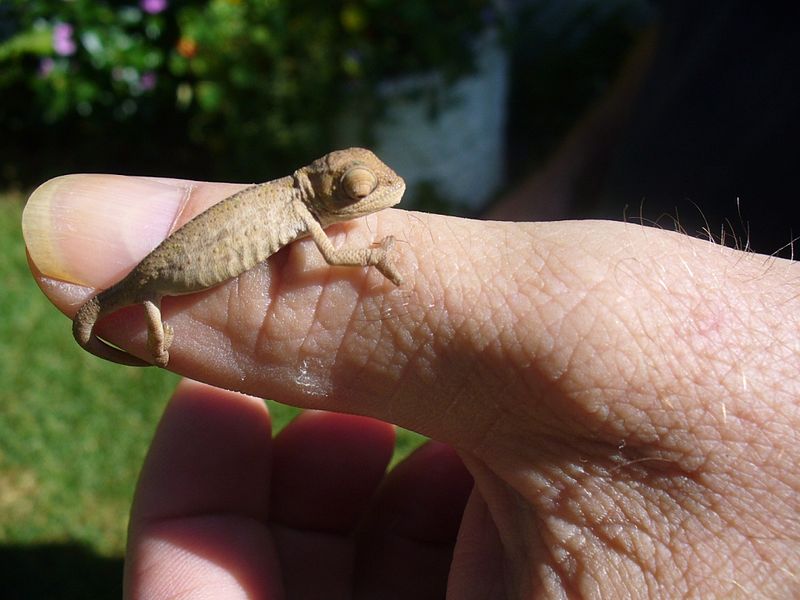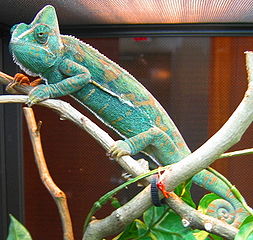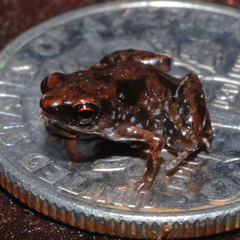
The Edge of Extinction?
Until recently, the gorgeous, emerald-green Belalanda Chameleon was know to exist in only 2 tiny populations, both limited to a few trees within 2 villages in Madagascar. This month (March, 2011), a third population, also within a village, was discovered by researchers from Great Britain’s Durrell Institute of Conservation and Ecology.
While some believe that other individuals may thrive in more natural situations, it must be said that Madagascar’s habitats have been well studied by herpetologists, and its woodlands are subject to the world’s highest rate of deforestation. The Belalanda Chameleon, one of at least 75 species endemic to Madagascar (found nowhere else on earth) may indeed be holding on for dear life in only 3 tiny, disturbed habitats.
The IUCN classifies the Belalanda Chameleon as Critically Endangered and it is listed on Appendix II of Cites. Photos are available on the Arkive Website.
Madagascar’s Other Endangered Species
Chameleons are not the only Madagascan animals facing uncertain futures. The island’s tortoises, rare, colorful and coveted by collectors, are all highly endangered…this article reports that as many as 1,000 may be poached each week!
Lemurs, gorgeously-colored Mantella Frogs, plants, insects and scores of creatures are all in dire straits. Fortunately, Mantellas and certain others breed well in captivity, but many species do not.
Chameleon Research
Recent studies of chameleons have challenged a few basic assumptions that have long been held about reptiles. For example, we now know that certain chameleons will alter their color and behavior differently in response to specific predators…snakes and birds, for example, will not elicit the same response. We had long believed that temperature and stress alone determined color change. Please see this article for details.
Chameleons will also modify their basking behavior in response to the Vitamin D levels in their diet (and I thought we had UVB needs all figured out!); please see this article to read more.
Chameleons as Pets
 Chameleons are much desired but often troublesome additions to both zoo and private collections. For those with experience, however, there are a few that often do well if strict attention is paid their needs.
Chameleons are much desired but often troublesome additions to both zoo and private collections. For those with experience, however, there are a few that often do well if strict attention is paid their needs.
The Veiled Chameleon, Chamaeleo calyptratus, hails from a very harsh environment and seems to adapt well to change; it is an ideal “first chameleon”. Due to their minuscule size, Dwarf Chameleons, Bradypodium spp., can more easily be accommodated by most hobbyists (chameleons do not thrive when crowded) than larger species. Their dietary needs, however, are quite specific.
Please see the articles below for detailson the care and natural history of Veiled and Dwarf Chameleons.
Further Reading
Updates on Belalanda Chameleons and other Madagascan wildlife
Parson’s Chameleon image referenced from wikipedia and originally posted by JialiangGao
 That Reptile Blog – Reptile, Amphibian and Exotic Pet Care and Information
That Reptile Blog – Reptile, Amphibian and Exotic Pet Care and Information




this is probably the smallest chameleon I’ve ever seen. It’s too cute.
Hard to imagine it has a heart, brain and other organms similar to ours! best, Frank